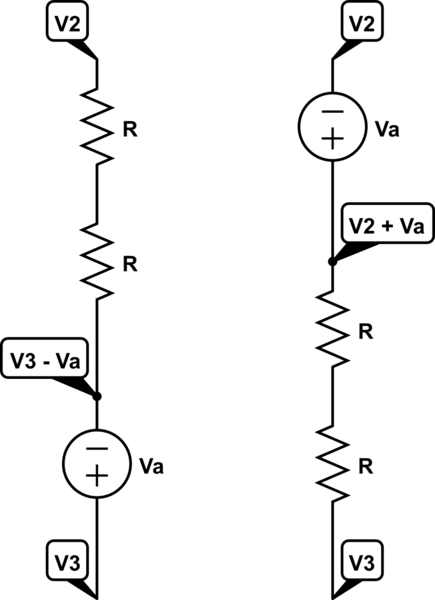I'm doing nodal voltage analysis on a circuit (zoomed in and cut out all but the relevant part in the picture), and ran into a situation I have no clue how to tackle. I don't understand how to figure out the equation for the current from V2 toward V3 and vice versa. If the resistors weren't there then it would be no problem, but their involvement trips me up.
Embarrassingly, even seeing the answer (V2-(V3-Va))/2R and (V3-(V2+Va))/2R I still don't get it. I would love if someone could help me figure out how to approach this.
(I know this is a noob question and I'm sure this kind of question has been addressed before, but I couldn't find one after looking through the first 10 or so suggestions, so here goes)


